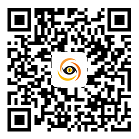- Home
-
Optiger Lens
-
Bi-telecentric Lens
- German Designed Optiger TTL06 Series
- German Designed Optiger TTL08 Series
- German Designed Optiger TTL9.5 Series
- German Designed Optiger TTL11.5 Series
- German Designed Optiger TTL16 Series
- German Designed Optiger TTL18.5 Series
- German Designed Optiger TTL23 Series
- German Designed Optiger TTL28.5 Series
- German Designed Optiger TTL39.2 Series
- German Designed Optiger TTL44 Series
- Telecentric Lens
-
Bi-telecentric Lens
- Canary lens
- Optiger Light Source
- Related Products
- Technical Support
- About Us
-
Company Gallery
- Contacts
Related Products
Product Description
This product started with the Neon-CLB, the
world's first PoCL frame grabber. Next came the Neon-CLD which supports two
cameras on the same low-cost x4 PCIe platform. The newest member, the Neon-CLQ,
supports capture from four cameras simultaneously. Both cameras can be run
completely independent (with different resolutions, frame rates, triggering
modes, etc.) or perfectly synchronized. The Neon-CLQ is incredibly flexible and
powerful, yet it can substantially lower system cost. Although the Neon-CLQ
only requires a single PCIe slot it provides four camera interfaces plus I/O.
This means the Neon-CLQ hits the highest density of cameras per slot of any
frame grabber on the market while bringing the cost per camera down to
unprecedented lows.
Power over Camera Link
Power over Camera Link (PoCL) is an extension of the Camera Link specification that allows for frame grabbers to provide power to small cameras over the Camera Link cable. PoCL provides many advantages to the OEM. First, the cabling is vastly simplified, as only a single cable is required for data, power, and control to the camera. This provides all the convenience of Firewire or USB cables schemes with the addition of industrial cabling and much higher data rates. Another advantage is that, because only a single cable is required, the camera footprint can be greatly reduced.
PoCL Safe Power
The baseline PoCL specification only outlines the basic requirement of the frame grabber providing power to the camera. However, without some protection, there are many situations that can occur where both the frame grabber and/or the PC the board it is installed in can be damaged. To overcome these problems an ancillary provision was added to the PoCL standard called "Safe Power". The Safe Power specification takes into account every possible situation that might occur on the CL power lines and protects both the frame grabber and the PC. Safe Power also provides a path for backwards compatiblity with non-PoCL cameras and non-PoCL cables.
FlowThru Architecture
Comprised of a user-programmable Video Pipeline, a flexible Camera Control Unit, efficient high-speed video FIFOs and a highly-optimized scatter/gather DMA engine, the FlowThru architecture allows the Neon-CLQ to control, acquire, reformat, and transfer video data directly into the user's application at camera speeds with zero latency or CPU usage. FlowThru architecture has been continuously optimized and enhanced to support a wide variety of imaging applications such as document/package processing, semiconductor, continuous web inspection, sequence capture, and motion analysis. It can easily be adapted to the specific needs of application.
Software Support
The Neon-CLQ is supported by the BitFlow Software Development Kit (SDK), which is available for both 32-bit and 64-bit Windows platforms. The SDK is board family generic and will work with all of BitFlow's frame grabbers. The kit provides drivers, DLLs, and configuration utilities for people interested in using third party software. For customers interested in developing their own applications, the SDK provides header files, libraries, and huge amounts of example code. The SDK provides a wide range of Application Programming Interfaces (API), from low-level direct hardware access to high-level automatic buffer management. Every line of code has been engineered for reliability under the toughest industrial conditions. At the same time, a priority has been put on ease of use and short development times.
PCI Express Interface
The Neon-CLQ uses a x4 PCI Express bus interface. The PCI Express bus offers huge increases in DMA performance over the PCI bus. However, what is less well known is that the PCI Express bus is always peer to peer. This means the Neon-CLQ does not share the bus with any other devices. In most motherboard architectures, it will talk directly to the PCI chipset that is on the memory bus. This direct connection equates to higher sustained DMA bandwidths regardless of system load. Most motherboards also support concurrent full DMA speed on all of their PCI Express slots. The board will work in any slot that it fits in. This means not only x16, x8 and x4 slots, but also, as is becoming the trend, x1 slots that use x4 (or larger) connectors.
Camera Control and I/O
Supported by a GUI camera file editing
utility (CamEd), the Neon can acquire fixed or variable size images and
features a programmable ROI (Region Of Interest) sub-windowing capability. The
board provides a full set of camera control signals (CC1, CC2, CC3, CC4) and
sync inputs (LVAL, FVAL, PCLK, trigger, and encoder) for total camera and
acquisition control. These signals are completely independent, although there
are provisions for driving all cameras from a signal set up encoder/trigger
signals. There is also a large number of programmable general purpose outputs
and inputs that are not tied to the camera's timing.
Specifications
>> Supports four Base CL cameras
>> Provides Power over Camera Link
(PoCL) for all cameras
>> Support both PoCL and non-PoCL
cameras
>> Provides Safe Power - full
protection from all CL power line faults
>> All cameras can be independently
synchronized
>> Separate I/O for each camera
>> SDR Camera Link connectors
>> Support simultaneous serial
communications to all four camera
>> The Neon-CLQ appears to Windows as
four separate frame grabbers
>>Fully backwards compatible with
non-PoCL cameras and cables
>>Half-Size x4 PCI Express Board
>> Acquire up to 24 bits at 85 MHz
>> FlowThru technology means that no
on-board memory is needed
>> Supports images up to 256K x 128K
>> No frame rate limit
>> Triggers and encoders for external
control of acquisition
>>Programmable signal generator for
camera control (independent for each camera)
>> Quadrature encoder support
including sophisticated triggering schemes
>>Encoder divider/multiplier
>> Drivers, utilities, and examples
for Windows and Linux
>> Supported on both 32-bit and
64-bit platforms
>> Drivers for most 3rd party
processing environments (e.g. HALCON, LabView, VisionPro, MATLAB, etc.)
>> Acquire variable length frames
with line scan cameras
>>Acquire image sequences well
beyond the 4GB barrier
>> RoHS compliant
站用透明_m9M5aQ.png)






號二維碼網(wǎng)站底部.jpg)

站[2].png)

站用透明.png)




號二維碼網(wǎng)站右側(cè).jpg)